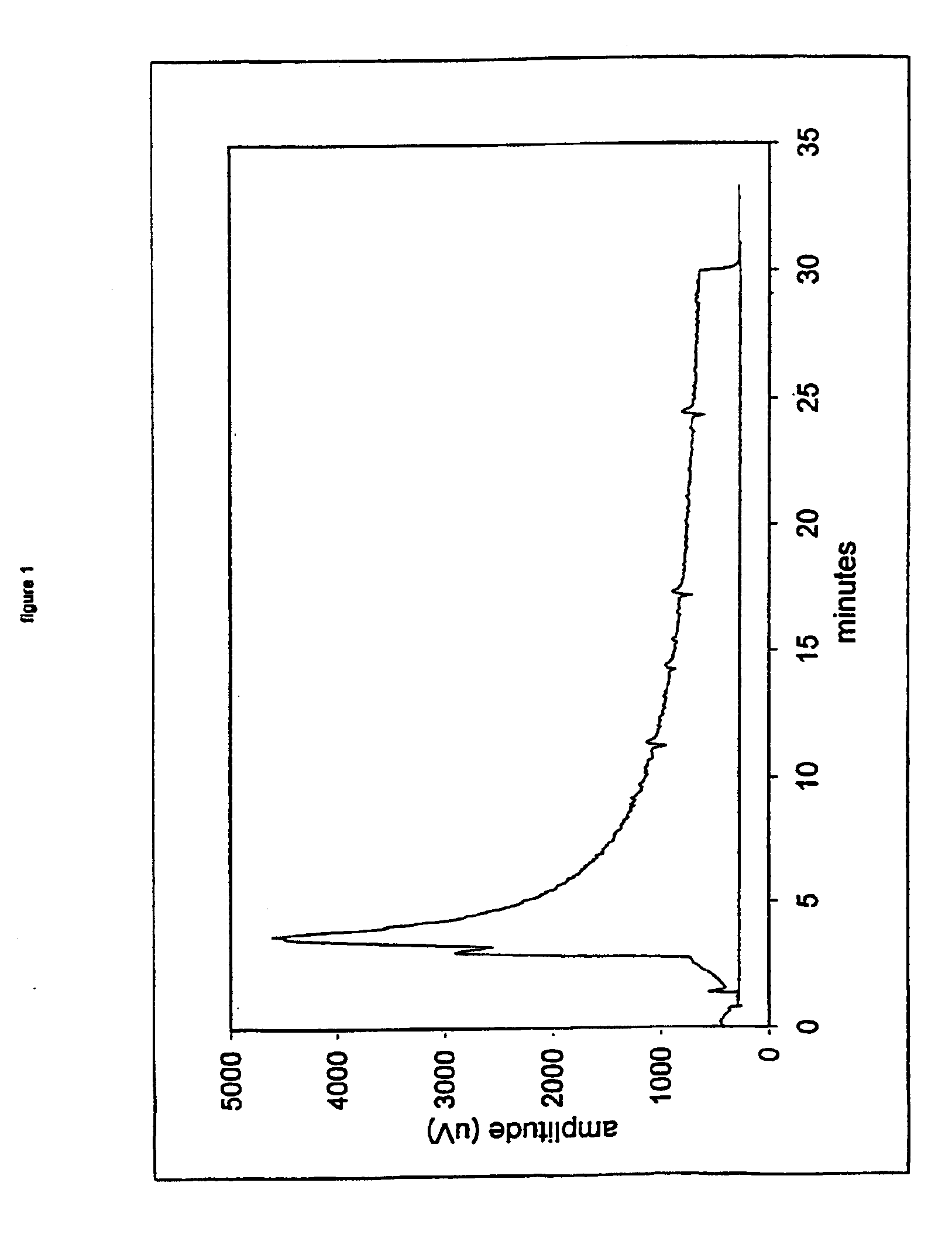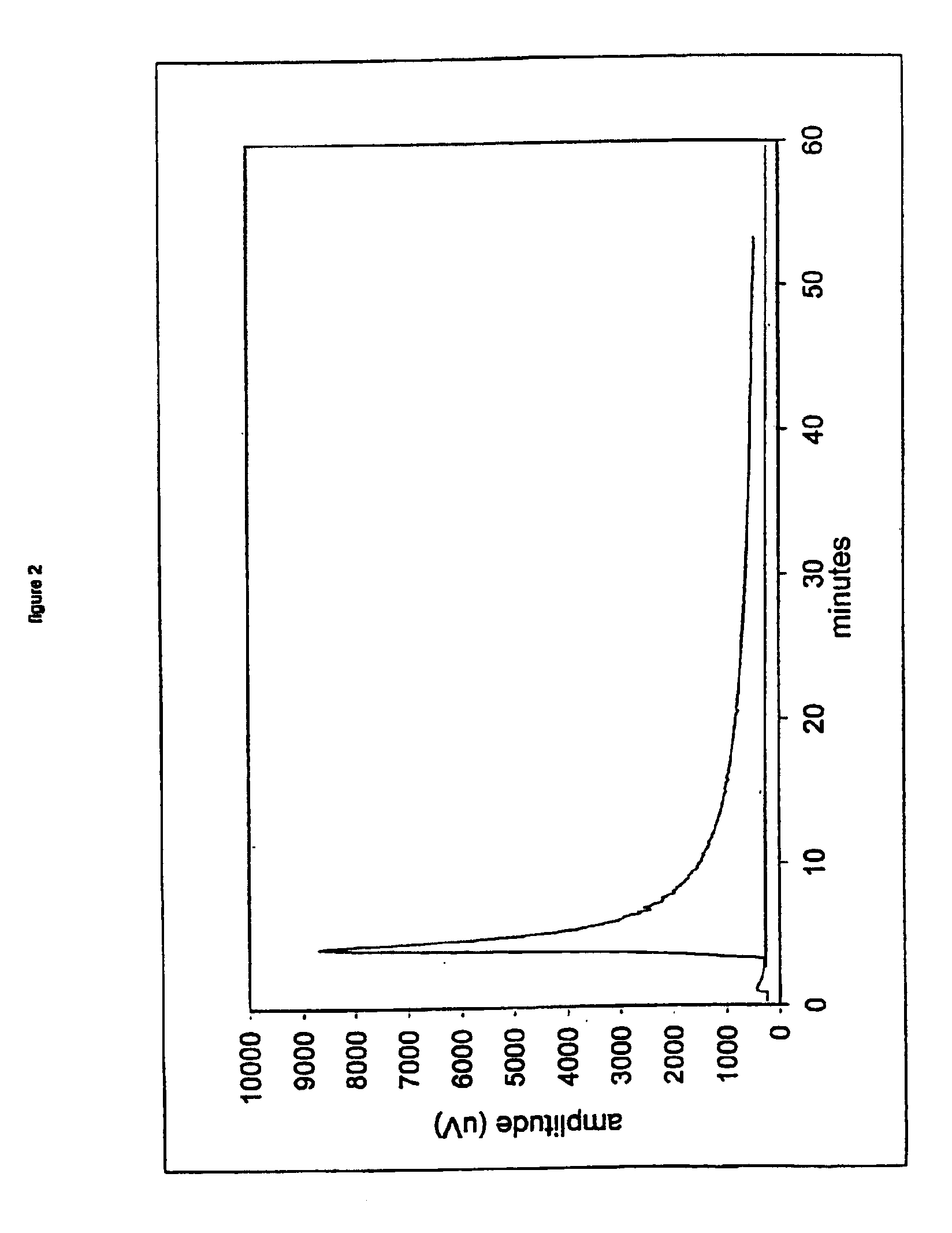Nitric oxide-releasing metallic medical devices
a technology of metallic medical devices and nitric oxide, which is applied in the direction of prosthesis, catheters, extracellular fluid disorders, etc., can solve the problems of irreparable damage, persistent risk of thrombogenesis and restenosis, and injury of the vessel wall at the site of balloon expansion or stent deployment, so as to stimulate localized vasodilation and angiogenesis, promote wound healing, and reduce inflammation
- Summary
- Abstract
- Description
- Claims
- Application Information
AI Technical Summary
Benefits of technology
Problems solved by technology
Method used
Image
Examples
example 1
Preparation of the Metallic Surfaces Prior to Silanization
[0045]Metal stents to be silanized in accordance with the teachings of the present invention are cleaned as followed. Stents are completely immersed in hexane (available from Sigma Chemical, St. Louis, Mo.) and sonicated for 15 minutes in an ultrasonic bath. Next, the stent is removed from the hexane and immersed in 2-propanol (available from Sigma Chemical, St. Louis, Mo.) and sonicated as before. The stent is then thoroughly rinsed in distilled water prior to being immersed in 1 N sodium hydroxide (available from Sigma Chemical, St. Louis, Mo.) and sonicated for an additional 15 minutes in an ultrasonic bath. The stent is again thoroughly washed in distilled water and then dried overnight at 40° C. under vacuum.
example 2
Method for Providing Metallic Medical Device with an Amino-functional Silane Coating
[0046]Into a small clean non-reactive vial, add 5 g trimethoxysilyl-propyldiethylene-triamine (available from United Chemical Technologies, Inc., Bristol, Pa. catalogue number T-2910), 7 g acetonitrile and 3 g THF (both available from Sigma Chemicals, St. Louis, Mo.), mix thoroughly for 15 minutes or until all of the trimethoxysilyl-propyldiethylene-triamine is in solution. Dip a previously cleaned stent into the saline solution for 10 seconds. Remove the stent from the silane solution, drain, and allow to dry for 30 minutes in a well ventilated area. Next the stent is dried over night at 40° C. under vacuum.
example 3
Providing a Metallic Medical Device with a Polyethylenimine (PEI) Direct Coating
[0047]Into a small clean non-reactive vial, add a predetermined amount of PEI (available from Aldrich Chemicals, St. Louis, Mo. catalogue number 46853-3), 7 g acetonitrile and 3 g THF. Mix thoroughly for 15 minutes or until all of the PEI is in solution. Next, add 0.2 g of 3-isocyanatopropyltriethoxysilane (available from United Chemical Technologies, Inc., Bristol, Pa. catalogue number I-7840)to the PEI / solvent solution. Mix for an additional three minutes using a roller mixer. Dip a previously cleaned stent into the silane solution for 10 seconds. Remove the stent from the silane solution, drain, and allow to dry for 30 minutes in a well ventilated area. Next the stent is dried over night at 40° C. under vacuum.
PUM
 Login to View More
Login to View More Abstract
Description
Claims
Application Information
 Login to View More
Login to View More - R&D
- Intellectual Property
- Life Sciences
- Materials
- Tech Scout
- Unparalleled Data Quality
- Higher Quality Content
- 60% Fewer Hallucinations
Browse by: Latest US Patents, China's latest patents, Technical Efficacy Thesaurus, Application Domain, Technology Topic, Popular Technical Reports.
© 2025 PatSnap. All rights reserved.Legal|Privacy policy|Modern Slavery Act Transparency Statement|Sitemap|About US| Contact US: help@patsnap.com



